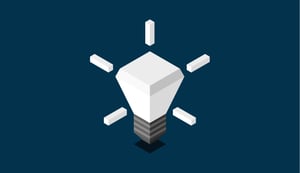Are you striving to turn your new software users into regulars, but aren't quite sure how to make that leap?
Understanding 'user activation' could be the game changer you need.
Let's demystify this buzzword and clarify how it's different from other terms used in user onboarding process
What is User Activation?
In the SaaS (Software as a Service) industry, user activation is the journey a new user takes from signing up to achieving the promise the product had made that is related to their goal.
The steps that users take along the journey are often key features of the service that drive engagement and retention as they lead to 'aha moment' (when users realize the value and usefulness of the product, prompting them to continue using and, possibly, paying for the service). In that sense, user activation is more of a journey rather than a state.
The definition of "activation" can vary from company to company, depending on the nature of the service and what constitutes meaningful user engagement.
For example, in a project management SaaS tool or dedicated task management solution, user activation might be when a user creates their first project, assigns tasks, and invites team members.
For a cloud-based file storage and sharing service, activation might be when a user uploads their first file and shares it with others.
User activation is a critical metric in the SaaS business model. It not only signifies that users have grasped the basic functionalities of the service, but also that they have seen firsthand the value that the service provides. This can lead to increased user engagement, higher conversion rates from free to paid subscriptions, and improved user retention, which are all key for a SaaS business's growth and profitability.
Effective onboarding processes are usually designed with these activation goals in mind, aiming to guide users towards these critical actions as smoothly and quickly as possible.
And for businesses, it's a really important moment, because once a user is "activated," they're much more likely to keep using the service, tell their friends about it, or even pay money for extra features.
How is User Activation Different from User Acquisition?
When you're running a B2B SaaS business, you'll often hear about two terms: "User Acquisition" and "User Activation".
While they might sound similar, they play very different roles in your business. Let's understand each of these terms and how they differ from each other.
Firstly, let's talk about user acquisition.
This is all about getting new users to sign up for your service. Think of it like inviting guests to a party. You send out the invites, tell people about the great time they'll have, and try to get as many people as you can to say they'll come.

In the SaaS world, this could mean advertising, marketing campaigns, or even word-of-mouth referrals. The aim here is to bring in as many users as possible to try out your software.
User activation is all about making sure that once users sign up, they find enough value in your software to keep using it. It's the first time a user achieves a significant result with your service, the moment when they think, "Wow, this is really helping me."
Let's say your company provides a project management tool. User acquisition happens when a new company signs up to use your software.
But user activation?
That might only happen when they've created their first project, assigned some tasks to team members, and successfully met their first deadline using your tool. This is when they really understand how useful your software can be, and are more likely to keep using it in the long term.
So, user acquisition and user activation are two sides of the same coin.
Without user acquisition, you won't have any users to activate. But without user activation, the users you acquire might not stick around. They're both vital steps in the journey of a user from being a complete stranger to becoming a loyal customer.
To put it simply, user acquisition is getting someone to walk through your door, while user activation is ensuring they like what they see enough to stay. The ultimate goal is to not just get people to sign up, but to find real value in your product, which is what user activation is all about.
Remember, a user who signs up but doesn't see the value in your product is unlikely to stick around, let alone become a paying customer. But when a user becomes activated, they're seeing firsthand the value your product provides. They're much more likely to continue using your product, become a loyal customer, and even tell others about how great your product is.
When is a User Considered to Be Activated?
A user is typically considered to be activated when they experience the promise of the product for the first time in relation to their goal.
They have to do a set of actions to reach this goal. These "activation actions" vary widely depending on the nature of the product or service.

After a user is onboarded you should analyze how long it takes them to do this action again within a period of time which can give you a great customer driven north star metric.
In a software as a service (SaaS) application, for example, a user might be considered activated when they use a key feature of the software for the first time. If it's a project management tool, that could be when they create their first project or add their first task. If it's an email marketing tool, the activation might occur when they send out their first campaign.
In a social media app, a user might be considered activated when they make their first post or gain their first follower. For an online marketplace, it could be when a user makes their first purchase or posts their first listing.
The common thread is that the activation action is something that shows the user is not only using the product but is also receiving value from it, indicating that they're likely to continue using it.
It's important to note that defining what counts as an "activation action" isn't always straightforward. Let's look at these in our next section.
Actions in Different Types of Products
Identifying the specific activation action in relation to the product should be aligned with the core function or purpose that the product aims to serve for the user.
It's challenging to do that for horizontally-aligned or more generalized solutions. For example, for a project management tool, you could consider a variety of actions as potential 'activation actions', such as the creation of the first task, assigning the first responsibility, or even sending the first progress update.
Since such a product might serve multiple "jobs to be done" for the users, pinpointing the critical activation action becomes a little more complex.

On the other hand, for vertically-aligned products that cater to a very specific solution or user need, defining the activation action becomes more straightforward. A clear example of this can be a meeting booking software designed specifically for doctors. The primary "job to be done" here is to facilitate meeting booking between doctors and patients or other healthcare professionals. Hence, the activation action could be as direct as when a doctor schedules their first meeting using the software.
The best activation metrics are those that closely align with ongoing user engagement and retention, so it may take some testing and data analysis to determine which actions are the best indicators of long-term user value.
Final Thoughts
You've already put in a tremendous amount of work in getting customers through the door.
Now, it's crucial to keep them engaged, provide them value, and make sure they stick around.
But how can you make that happen?
That's where a professional partner like Inturact can step in.
With our specialized B2B SaaS user onboarding services, we ensure that your hard-earned customers don't just sign up but also activate and engage with your product in a meaningful way.
At Inturact, we understand that user activation is not a one-size-fits-all process.
It takes a unique blend of strategy, understanding of user behavior, and application of best practices. It requires not just guesswork but tried-and-tested strategies and frameworks that are customized to your service offering.
Our team at Inturact has spent years perfecting these strategies.
We've worked with numerous SaaS businesses, helping them make the transition from simple user acquisition to meaningful user activation. We don't just help your users understand your product; we help them see the value, the utility, and the potential it has to improve their workflows.
So, instead of leaving it to chance, why not entrust your user onboarding and activation to the professionals? You've already done the hard work of attracting users - now let us help you keep them. Reach out to Inturact today, and let's turn your users into active, engaged, and loyal customers.



